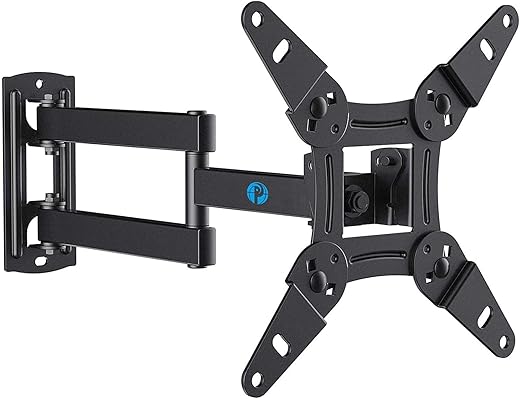Ensure Max Protein Shake | Milk Chocolate | Ready to Drink | 30g Protein for Muscle Building | 1g Sugar, 4g Fiber | 11 fl oz - 12 Pack
Thrift shopping is a wonderful way to find unique items at affordable prices, but ensuring the quality and cleanliness of these items can be challenging. The step-by-step guide “How to ensure the items I buy at thrift shops are clean and in good condition” aims to equip individuals with essential tips to navigate thrift stores effectively. From thorough inspection for damages and stains to proper cleaning techniques, this guide provides a comprehensive approach to help shoppers make informed decisions and bring home treasures that are both clean and in excellent condition.
Inspect the item visually
- Carefully inspect the item: Examine every part of the item for any visible stains, tears, or damages.
- Assess the quality: Determine if the item meets your standards by closely evaluating its condition.
- Make an informed decision: Ensure that the item is in the desired state before proceeding with the purchase.
Check for odors
Smell the item thoroughly to detect any undesirable odors such as mustiness, smoke, or overpowering scents that could prove challenging to eliminate. Hold the item close to your nose and take a deep breath to assess its odor. If you notice any unpleasant smells, consider using odor eliminators or airing out the item in a well-ventilated area to help get rid of the unwanted scent. It’s essential to ensure the item smells fresh before making a final decision on its condition.
Examine for quality
- Inspect the material: Check the fabric, leather, or other material of the item for any signs of wear, stains, or damage. Look for high-quality materials that feel durable and smooth to the touch.
- Examine the seams: Carefully inspect the stitching and seams of the item. Make sure there are no loose threads, uneven stitching, or fraying edges. Strong and well-sewn seams indicate better quality and longevity.
- Analyze the overall construction: Evaluate the overall structure and build of the item. Assess how well the different parts are put together and if they feel sturdy and well-made. A well-constructed item is likely to be more durable and long-lasting.
Check for cleanliness
- Inquire about item’s cleaning history or ask if it has been washed before.
- Look for signs of dirt, dust, or grime.
- Examine the corners, edges, and crevices for hidden filth.
- Use a clean cloth to wipe the surface and check for any leftover residue.
Test zippers, buttons, and closures
- Check all zippers by opening and closing them multiple times to ensure they move smoothly without getting stuck.
- Inspect each button to confirm they are securely attached and can withstand normal wear and tear.
- Test closures such as snaps, hooks, or clasps to make sure they function correctly without any signs of damage.
Try it on if applicable
Try on the item, especially if it is clothing. Ensure it fits properly and feels comfortable. This step is essential to confirm your satisfaction with the purchase.
Negotiate price if needed
- Assess: Inspect the item for any minor flaws that you have noticed.
- Prepare: During negotiations, politely point out the imperfections to the seller.
- Propose: Suggest a reduced price that reflects the condition of the item due to its flaws.
Clean the item before use
When you bring the item home, clean or disinfect it thoroughly based on the care instructions. Start by washing it with warm, soapy water and then wiping it down with a disinfectant. For example, if it’s a kitchen appliance, follow the manufacturer’s guidelines for proper cleaning to ensure its hygiene and safety for use. Finally, make sure to dry the item completely before using it to prevent any moisture-related issues.
Final Thoughts
In conclusion, we have outlined practical steps to ensure a successful thrift shopping experience. By implementing these strategies, we can confidently navigate thrift stores and select items that are both clean and in good condition. With these tips in mind, we are equipped to make the most of our thrifting adventures and uncover quality gems while staying mindful of cleanliness and quality. Let’s step into the world of thrift shopping with assurance and style!
Cleaning Supplies Needed
Thrifting 101: Pro Tips
Tips and Techniques for Successful Thrift Shopping
- Start by setting a budget that you are comfortable with to avoid overspending
- Research thrift stores in your area to find ones that carry items you are interested in
- Keep an open mind and take your time browsing through the racks to discover unique pieces
- Inspect items for any damages or stains before purchasing to ensure you are getting quality pieces
- Try on clothes and test out electronics before buying to make sure they fit and work properly
Frequently Asked Questions (FAQs)
Yes, thrift shops often have specific pricing strategies in place to attract customers and maximize profits. Some common pricing strategies include:
- Value-Based Pricing: Pricing items based on their perceived value to customers, considering factors like brand, condition, and demand.
- Volume-Based Pricing: Offering discounts for bulk purchases or setting lower prices for items that have been in the store for a long time.
- Seasonal Pricing: Adjusting prices based on the season to reflect the demand for certain items (e.g., winter coats in the fall).
- Sales and Discounts: Holding regular sales events or offering discounts on specific categories of items to attract customers and encourage purchases.
- Donation-Based Pricing: Some thrift shops set prices based on the donations they receive, taking into account the quality and popularity of the items.
These pricing strategies help thrift shops manage inventory, attract customers, and generate revenue to support their charitable missions.
Yes, there have been numerous instances where valuable items have been discovered while thrift shopping. These hidden gems include rare artworks, vintage designer clothing, valuable jewelry, and even valuable antiques. In some cases, these items have been purchased for a fraction of their actual worth, making thrift shopping a treasure trove for those who know what to look for. It just goes to show that one person’s trash can truly be another person’s treasure!
We can repurpose thrifted items in various creative ways, such as turning old glass jars into stylish vases, transforming vintage sweaters into trendy pillow covers, or upcycling wooden crates into rustic bookshelves. Additionally, repurposing old suitcases into unique pet beds, creating jewelry holders from vintage plates, or using old picture frames to make decorative serving trays are other innovative ideas. These repurposing projects not only breathe new life into discarded items but also help reduce waste and add a personal touch to our living spaces.
Thrift shopping can be a fun and rewarding experience beyond finding bargains because it promotes sustainability by reducing waste and supporting charitable causes. By purchasing second-hand items, we are extending the lifespan of products and reducing the demand for new goods, thus helping the environment. Additionally, thrift shopping often supports local charities and communities through donations and proceeds from sales, contributing to social welfare. So, not only can we enjoy the thrill of finding unique items at great prices, but we can also feel good about making a positive impact through our shopping choices.
Certainly! When thrift shopping, one effective strategy to find high-quality items is to examine the material and craftsmanship of the items. Look for well-made pieces with quality fabric or durable materials. Additionally, checking for brand names known for their durability and quality can also help identify high-quality items. We recommend thoroughly inspecting items for any damages or signs of wear to ensure you are getting a good value for your purchase. Lastly, developing an eye for spotting unique and valuable items can also help you discover hidden gems while thrift shopping.
Thrift shops typically procure their inventory through donations from individuals or businesses. These donations can include clothing, accessories, household items, furniture, and more. Some thrift shops also purchase inventory from estate sales, auctions, or wholesale suppliers. Additionally, retailers may receive excess inventory or unsold items from manufacturers or other businesses looking to offload surplus goods. It’s important to note that thrift shops rely heavily on donated items to stock their shelves and fulfill their mission of supporting charitable causes and promoting sustainability.
Of course! Generally, weekdays are better for finding good deals at thrift shops. Many stores restock their shelves on weekdays after the weekend rush, so you may have a higher chance of finding unique items at lower prices. Additionally, mornings are typically a good time to shop as items are freshly put out for sale. However, it can also depend on the individual store’s schedule and popularity.
Azonee 16 Pieces Sublimation Name Tag DIY Blank ID Name Badge with Round Corners Pin Custom Personalized Name Tag for School, Office (1.5 x 3 inch)
Get Organized Now! Garage Sale ToolKit
Secrets, systems and tools to help you easily plan, promote and profit from every garage sale you hold. These proven methods have helped people maximize their garage sale profits -- and they can help you!
5 Minute Survival Blueprint
No-Risk Survival Offer + 75% Commission + Bump






Thank you for sharing your success story! It’s amazing how a little effort can bring new life to thrifted items.
I always make sure to check for loose threads or missing buttons when buying clothes from thrift stores. It’s easy to overlook these small details but they can make a big difference in the quality of the item.
It would be great if you could write an article on upcycling thrifted items or DIY repairs for thrift store finds. That would be a cool way to extend the life of these treasures!
Thank you for the suggestion! Upcycling and DIY repairs are wonderful ways to give thrifted items a new life. I’ll definitely consider writing an article on that topic in the future.
After following these steps, I was able to score a designer handbag at a thrift shop for a fraction of the original price. It was in such good condition, I couldn’t believe my luck!
That’s fantastic! Thrift shops can truly hold hidden treasures. It’s wonderful to hear about your designer find!
Can you recommend any specific cleaning products that work well for different types of materials found in thrifted items?
I recommend using gentle cleaners like mild soap for fabrics, leather cleaner for leather items, and disinfectant wipes for surfaces. Always spot test first to ensure compatibility with the material.
I usually bring a small flashlight with me to check the nooks and crannies of items that might be missed during a visual inspection. It has saved me from buying items with hidden damages before!
Great tip! Checking items thoroughly is crucial, and using a flashlight is a smart way to catch any hidden issues. Thanks for sharing!
I found a vintage leather jacket at a thrift store that looked a bit worn out but after following this guide, it turned out to be a gem! Just needed a good cleaning and it was good as new!
This guide has been so helpful in making my thrift shopping experience more enjoyable and successful. Thank you for the detailed steps!